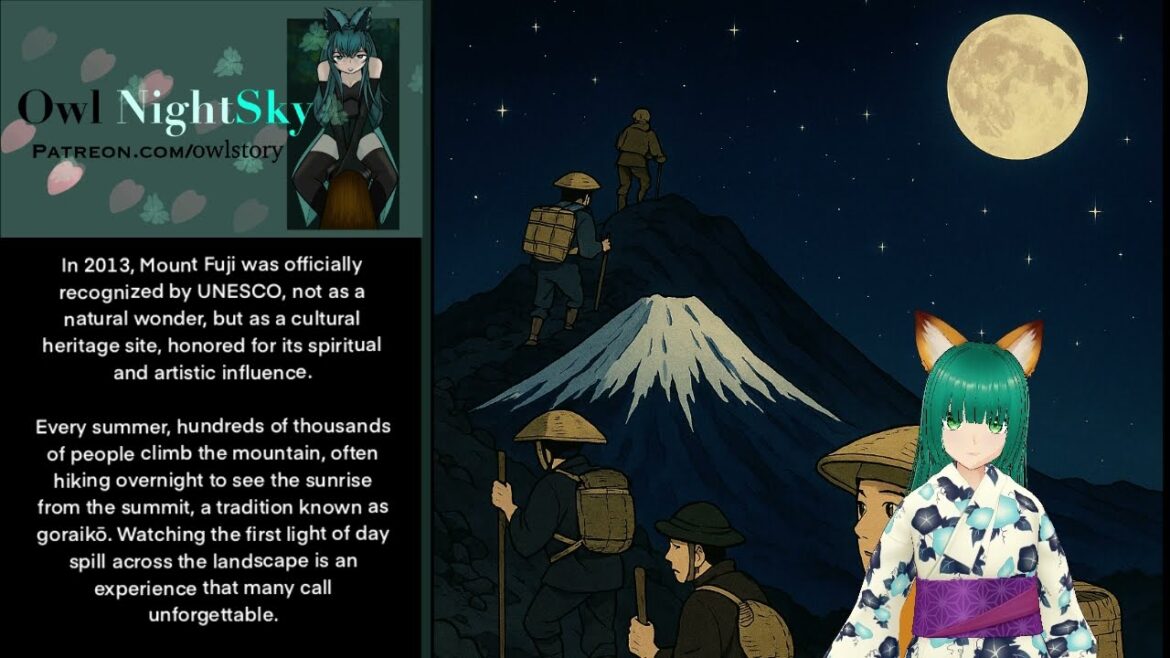Mt Fuji-a powerful part of Japanese identity
How did this majestic volcano become such a powerful part of Japanese identity? Rising high above the clouds with its near perfect cone and snowcapped peak. Mount Fuji is more than just Japan’s tallest mountain. It’s a national symbol, a spiritual icon, and a timeless muse for artists and poets. But how did this majestic volcano become such a powerful part of Japanese identity? Let’s go back not just hundreds but hundreds of thousands of years. Mount Fuji was born through layers of volcanic activity. What we see today is actually the third version of the mountain. Beneath it lie the remnants of two older volcanoes, Comet and Old Fuji. The current peak known as New Fuji began forming about 10,000 years ago. The last time it erupted was in 1707. This event known as the Hoi eruption sent ash as far as Edeto, present day Tokyo, but no lava flowed. Since then, Fuji has slept. Yet, it’s still an active volcano, and scientists continue to watch it carefully. But Mount Fuji is more than geology. For centuries, it’s been seen as sacred ground. In Shinto belief, it’s the home of Kohanasakuheim, the goddess of Mount Fuji and volcanoes. Pilgrims have climbed its slopes since at least the 7th century, seeking purification and enlightenment. By the Edeto period, in the 1600s, worship of the mountain had become a wide movement. Followers of the Fujio sect believed climbing it brought spiritual rebirth. Small shrines still dot the trail to the summit today, reminders of that sacred journey. And then there’s the art. In the early 1800s, Yukio Master Katsika Hokasai created his famous series 36 views of Mount Fuji. These iconic woodblock prints show Fuji from every angle, reflected in lakes, rising behind temples, peeking through mist. To this day, they shape how the world sees Japan. Writers, poets, and travelers have long praised Fuji’s beauty and its deeper meaning. In Japanese culture, it represents endurance, serenity, and the fleeting nature of life. In 2013, Mont Fuji was officially recognized by UNESCO not as a natural wonder, but as a cultural heritage site, honored for its spiritual and artistic influence. Every summer, hundreds of thousands of people climb the mountain, often hiking overnight to see the sunrise from the summit, a tradition known as Go. Watching the first light of day spill across the landscape is an experience that many call unforgettable. So whether seen from afar or climbed step by step, Mount Fuji remains a symbol of Japan rooted in myth, shaped by nature and elevated by centuries of devotion. Thank you for watching.
Rising high above the clouds, with its near-perfect cone and snow-capped peak, Mount Fuji is more than just Japan’s tallest mountain, it’s a national symbol, a spiritual icon, and a timeless muse for artists and poets.
But how did this majestic volcano become such a powerful part of Japanese identity?
Let’s go back, not just hundreds, but hundreds of thousands of years.
#Japan #mtfuji #japanesehistory #volcanic #fuji #Konohanasakuya-hime #mystery
#vtuber


AloJapan.com